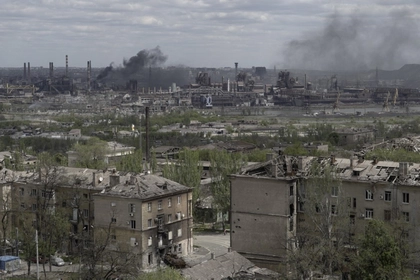At the primary auction, the MoF lowered interest rates for UAH bonds by 20‒30bp following NBU’s surprise cut in key rates a week before. YTMs in the secondary market also declined.The MoF borrowed UAH16.3bn (US$419m) last week, including UAH10.5bn (US$269m) in local currency. Demand for UAH bonds doubled compared with the week before, accompanied by a decline in interest rates in most bids.
Expectations of a decline in bond rates were high last week after the NBU cut its key rate and the rate on ON CDs by 50bp to 14.5% and the rate on three-month CDs by 150bp to 17.5%. Demand significantly exceeded the cap for 12-month and two-year securities, so the MoF only accepted bids with the lowest rates and decreased cut-off and weighted-average rates by 30bp and 25bp, respectively. The rates for three-year notes were down by 20bp. Investors also purchased USD-denominated bills without changes in interest rates. See details in the auction review.
JOIN US ON TELEGRAM
Follow our coverage of the war on the @Kyivpost_official.
In the secondary bond market, YTMs of UAH bonds slid in line with the primary market. At the same time, investors mostly focused on reinvesting funds from last week's redemption of USD-denominated bonds. Total secondary-bond-market turnover rose by 3.7% to UAH8.8bn (US$225m) with FX-denominated bonds share increasing to 54%. Trading in USD-denominated bills was significantly up last Thursday and Friday. The most traded were USD-denominated bills due next April, 42% of all trades in FX-denominated instruments.Due to debt redemption, individuals' portfolios declined last week by 4.6%.

Russiaʼs War Caused $170B in Infrastructure Damage to Ukraine
ICU view: The primary bond market almost immediately reacted to the NBU's decision to cut its key policy rate, but a decline in bond yields was less substantial. However, a significant cut in the rate for three-month CDs implies there is more room for a decline in bonds yields, including at the auction tomorrow. Last week, the MoF rejected nearly half of demand, which may increase competition at tomorrow's primary auction.At the same time, in the secondary market, investors actively reinvested funds from last week's redemption of USD-denominated bonds. They received proceeds last Thursday and could not participate in the primary auction.
Bonds: Eurobond rally intensifies after IMF communication
Ukrainian Eurobonds received support last week as the IMF board completed the third review of the EFF program.Eurobond prices sharply rose last week by an average 10% to 30‒38 cents, with the price range widening to 12.2%. The price of VRIs was up by 2% to above 48 cents of the notional value. The EMBI index rose by 1.1%.
ICU view: Positive news about a EUR4.5bn first tranche from the EU under the Ukraine Facility and a US$1.5bn loan from Canada supported Ukraine sovereign Eurobonds against the backdrop of favourable global sentiment towards emerging markets. At the end of the week, the rally even intensified as the IMF Executive Board approved the third review of the EFF programme for Ukraine and a US$880mn tranche disbursement.
Last Friday, the IMF published a revised memorandum that states that Ukraine and its advisors are finalizing technical work to design a debt restructuring that can be presented to investors shortly. More optimism was injected due to an improved forecast of the debt-to-GDP trend in the coming years. Investors took forecast updates as a sign that a less tough approach to restructuring may be pursued. Another positive news was the approval of the US budget last week and constructive comments from the Speaker of the House of Representatives. This gives more hope that the Congress will approve an aid package for Ukraine in April.
FX: Hryvnia weakens on larger market imbalances
The FX market saw a return to a hard currency deficit last week, and this resulted in a weaker hryvnia and a substantial increase in NBU interventions.In the interbank FX market, demand for foreign currency rose sharply last week while the supply of hard currency from legal entities declined. Bank clients purchased US$1.1bn of hard currency in four business days (23% more than in the same period of the previous week) and sold US$0.8bn, or 11% less.
The largest imbalance occurred last Tuesday when legal entities purchased US$342m of hard currency while selling only US$213m. Banks met this extra demand and then repurchased hard currency back from the NBU last Wednesday when the NBU sold US$170m from its international reserves. A similar pattern was likely observed last Friday, as the NBU sold about US$180m in interventions.
At the same time, in retail segment, the FX turnover changed insignificantly, with net hard currency purchases declining by 16% to US$71m.NBU interventions rose to US$681m. The official hryvnia exchange rate weakened by 1.7% to UAH38.8/US$, and the cash rate in systemically important banks weakened by 0.7% to UAH38.7‒39.3/US$.
ICU view: Last week, the situation in the interbank FX market changed with the balance turning back into negative territory following three weeks of surplus (when legal entities sold more hard currency than they purchased). The NBU satisfied this excess demand and strengthened the official exchange rate at the end of the week following the hryvnia weakening to UAH39.14/US$ in previous days. The retail FX market remains calm with the cash exchange rate trend remaining broadly in line with the interbank market.
You can also highlight the text and press Ctrl + Enter











